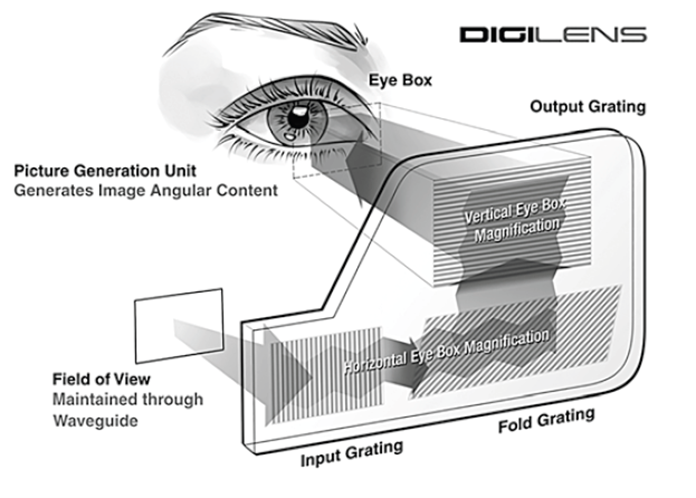Two-dimensional eyebox expansion for single-plate waveguide combiner for Augmented Reality headsets with high field of view
Master projects/internships - Leuven | About a week ago
Optical see-through head-mounted displays (HMDs) are key devices for AR applications, attracting significant interest from major industrial players. Currently, most AR-based HMDs utilize optical waveguide structures to reduce the overall size and weight of the devices. Compared to traditional AR systems, waveguide-based displays provide a notable benefit by utilizing an exit pupil expansion (EPE) scheme, which creates an optimal eyebox. Waveguide combiners are based on Total Internal Reflection (TIR) propagation of the entire field in an optical guide. The core of a waveguide combiner consists of in-couplers and out-couplers, which can be surface relief gratings or holographic volume gratings. To couple light into the waveguide and provide good color uniformity, diffracted non-zero order light should have high intensity across a wide angular range. For AR applications, several full-color waveguide solutions have been developed for light in-coupling into the optical device. To enable the transmission of multiple wavelengths with a high RGB field of view (FOV), we can fabricate a multi-waveguide solution representing a combination of stacked waveguides optimized for different colors. Reducing the number of waveguides while maintaining a high FOV is the key challenge since it miniaturizes and simplifies the system. Due to the strong spectral spread of the in-coupler elements, the overall RGB FOV of the single-waveguide system will be reduced. One method of achieving a full-color display with an extended FOV is to create multilayered metagratings for achromatic waveguide design. 2D EPE metagratings emerge as the preferred approach for miniaturized form factor architecture with high FOV. New solution must address this issue by creating a new transmissive metagrating on top of the achromatic waveguide with minimized waveguide real estate occupation.
The student will analyze possible solutions as reported in the literature in view of the fabrication requirements in the imec fab. Subsequently, a model will be elaborated for the selected structures, and the student will design the target structure using finite-difference time-domain electromagnetic simulations and iterative algorithms. A new design tool, driven by a physics-based generative neural network, will be developed to create multilayered compound metasurfaces with multiwavelength operation. He/she will evaluate in detail the performance of the designed structure based on the above-mentioned simulations. Finally, the student will draw the mask layout for the realization of these structures in the imec fab.

Type of Project: Thesis
Master's degree: Master of Science; Master of Engineering Science
Master program: Nanoscience & Nanotechnology; Physics
Duration: 6 months
Supervisor: Jan Genoe (EE, Nano)
For more information or application, please contact the supervising scientist Oksana Shramkova (Oksana.Shramkova@imec.be).
Imec allowance will be provided for students studying at a non-Belgian university.
